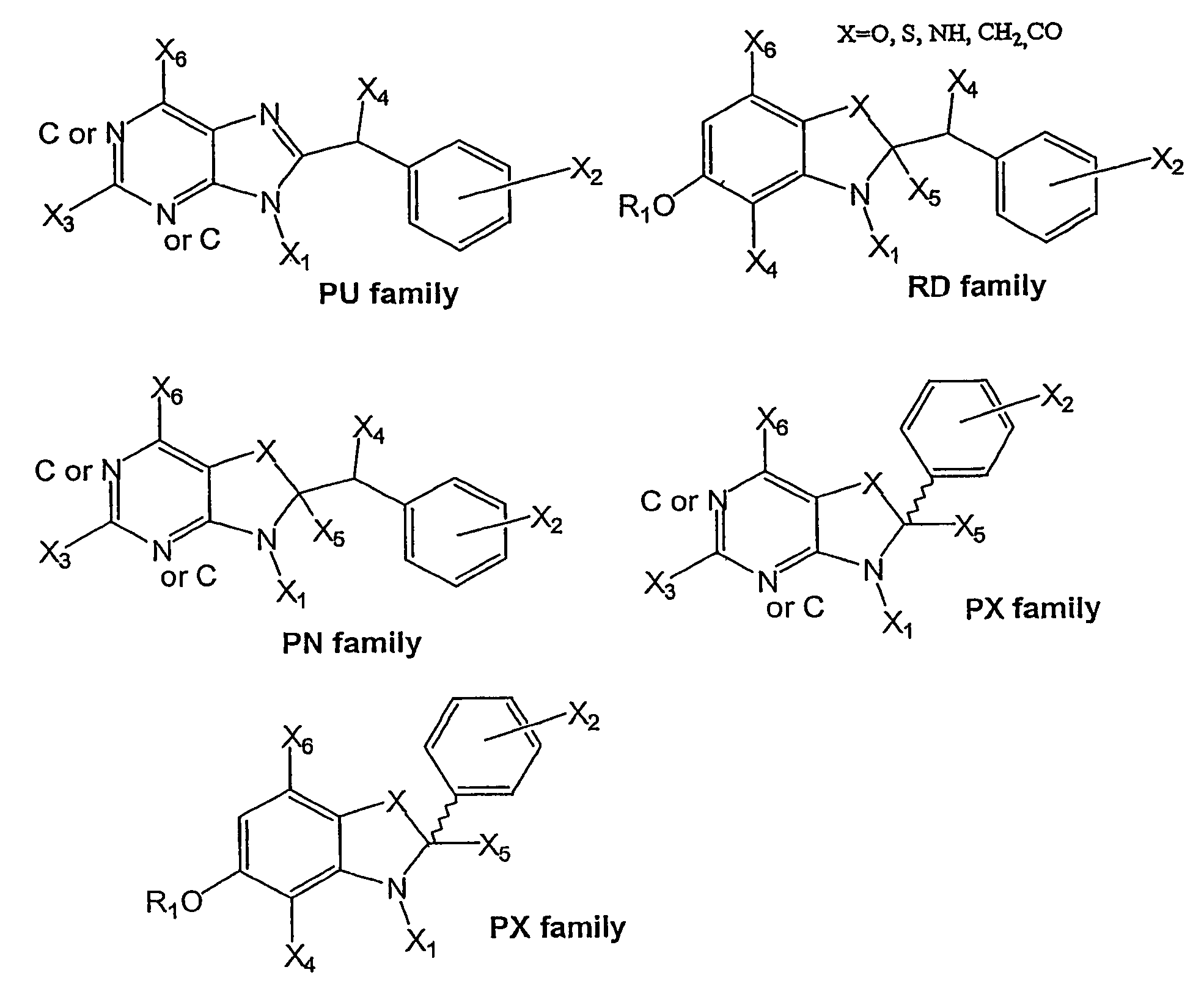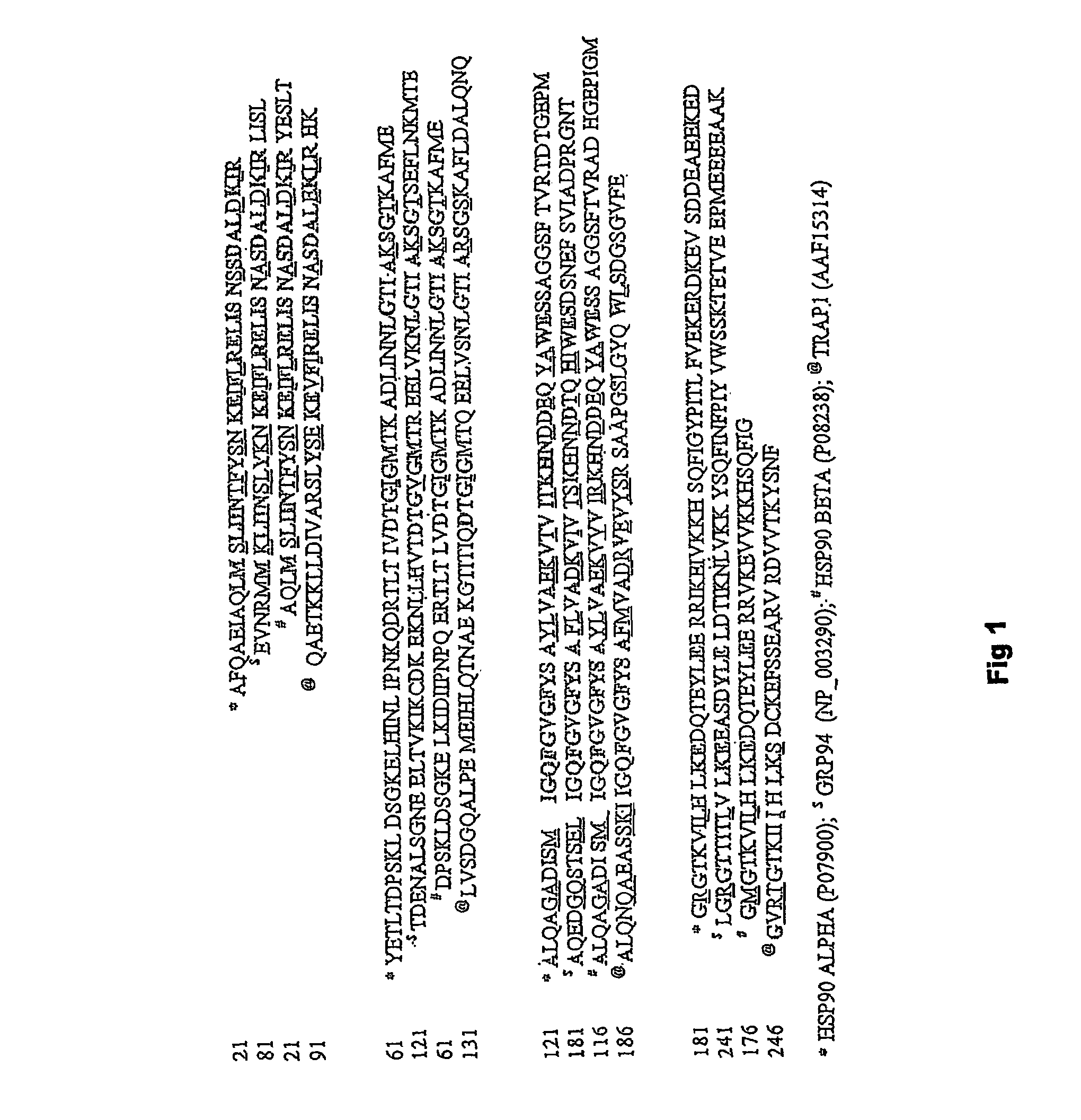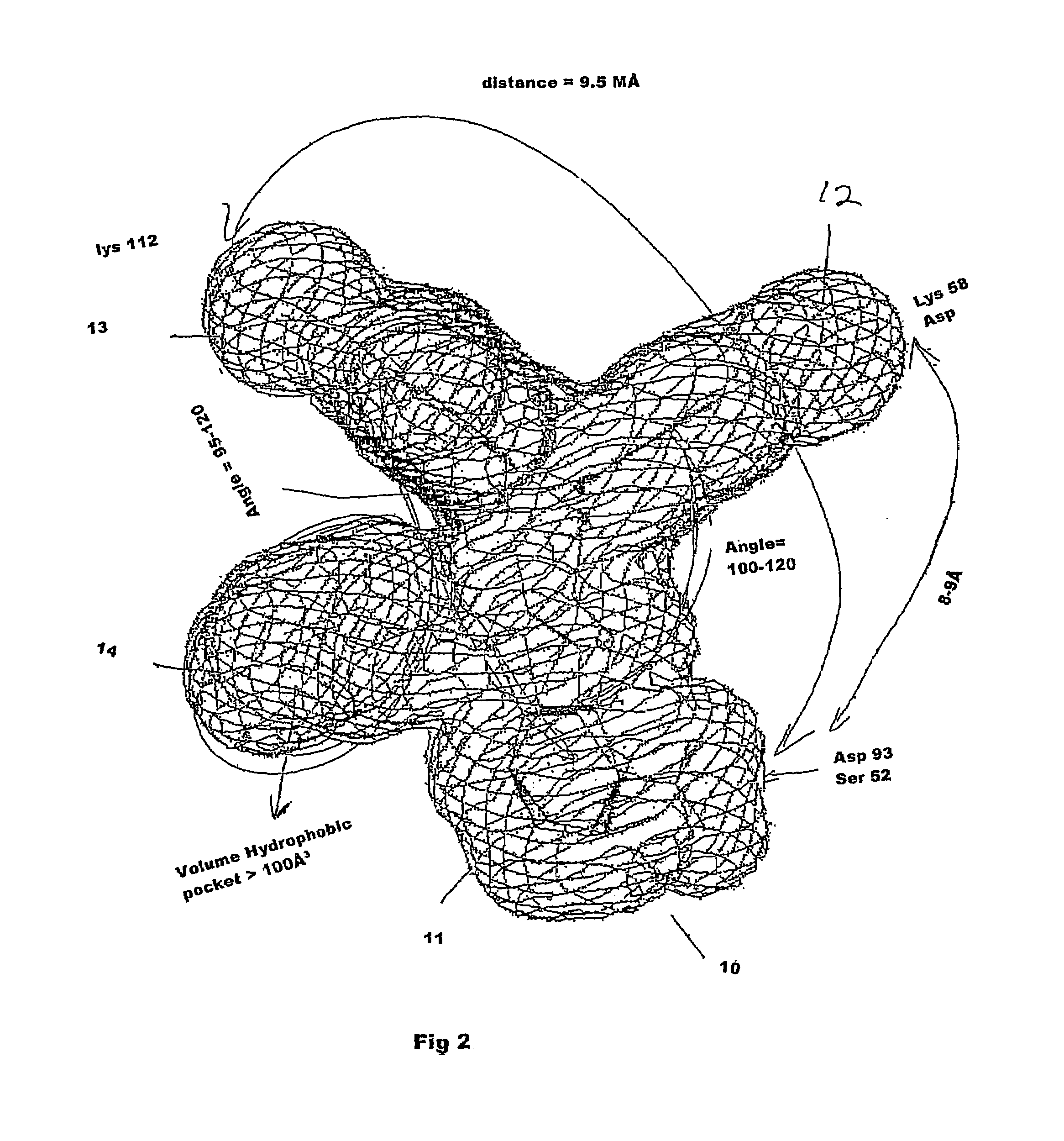Small molecule compositions for binding to hsp90
a small molecule and composition technology, applied in the field of small molecules, can solve the problems of insoluble or at best poorly soluble anasmycin antibiotics in aqueous media, lack of significant selectivity, and increased risk of undesirable side effects
- Summary
- Abstract
- Description
- Claims
- Application Information
AI Technical Summary
Benefits of technology
Problems solved by technology
Method used
Image
Examples
example 1
[0073]Compositions having general formula 1 were synthesized according to the scheme shown in FIG. 6A. To generate acid fluorides, to a solution of the phenyl acetic acid derivative (3 mmol) in 15 mL of CH2Cl2 (under inert atmosphere) were added 1.5 equivalents of cyanuric fluoride and pyridine (3 mmol). The mix was stirred for 1.5 h at room temperature, after which, 30 more mL of CH2Cl2 were added. The resulting solution was washed once with 0.5 mL water, and the crude acid flouride material resulted from the removal of the solvent was used in the next step.
[0074]The acid fluoride was used for the generation of PY-A, PY-B and PY-C derivatives as follows: To 675 mg (2.8 mmol) of 4,5,6-triaminopyrimidine sulphate in 1.5 mL of DMF were added 1.5 mL (9 mmol) of DIEA, the acid fluoride (obtained as described above) dissolved in 5 mL CH2Cl2 and a catalytic amount of DMAP (0.28 mmol). The reaction mixture was stirred under argon for 1 hr. The solid that formed was filtered off and the fil...
example 2
[0078]The human cancer cell lines MCF-7, SKBr3 and MDA-MB-468 were obtained from the American Type Culture Collection (Manassas, Va.) and maintained in 1:1 mixture of DME:F12 supplemented with 2 mM glutamine, 50 units / mL penicillin, 50 units / mL streptomycin and 5% (for MCF-7 and MDA-MB-468) or 10% (for SKBr3) heat inactivated fetal bovine serum (Gemini Bioproducts) and incubated at 37° C. in 5% CO2.
[0079]For assays on protein levels, cells were grown to 60-70% confluence exposed to drugs or DMSO vehicle for the indicated time periods. Lysates were prepared using 50 mM Tris pH=7.4, 2% SDS and 10% glycerol lysis buffer. Protein concentration was determined using the BCA kit (Pierce Chemical Co.), according to the manufacturers instructions. Clarified protein lysates (20-50 mg) were electrophoretically resolved on denaturing SDS-PAGE, transferred to nitrocellulose and probed with the following primary antibodies: anti-Her2 (C-18), -Her3 (C-17), -Raf-1, -cyclin D1, -Rb (C-15) (Santa Cru...
experiment 7
[0094]Cultures of SKBr3 and MCF-7 cells were treated with varying concentrations (0, 10, 50 100, or 250 μM) of PU3 for 24 hours. The cells were lysed and levels of Her2, Raf1, Her3, estrogen receptor (ER), p85 (PI3K), tubulin and actin were analyzed by western blotting. Reduction in the amount of those signaling proteins which depend on hsp90 for their function (Her2, Raf1, Her3 and ER) was observed. No effect was observed on PI3K, tubulin or actin, proteins which are involved in other signaling pathways.
PUM
| Property | Measurement | Unit |
|---|---|---|
| angle | aaaaa | aaaaa |
| molecular weight | aaaaa | aaaaa |
| molecular weight | aaaaa | aaaaa |
Abstract
Description
Claims
Application Information
 Login to View More
Login to View More - R&D
- Intellectual Property
- Life Sciences
- Materials
- Tech Scout
- Unparalleled Data Quality
- Higher Quality Content
- 60% Fewer Hallucinations
Browse by: Latest US Patents, China's latest patents, Technical Efficacy Thesaurus, Application Domain, Technology Topic, Popular Technical Reports.
© 2025 PatSnap. All rights reserved.Legal|Privacy policy|Modern Slavery Act Transparency Statement|Sitemap|About US| Contact US: help@patsnap.com



